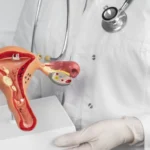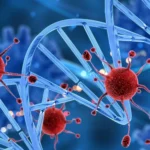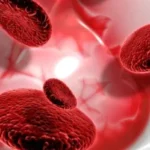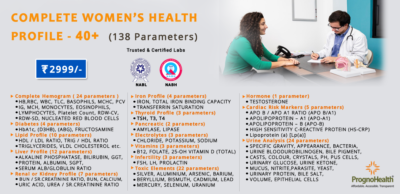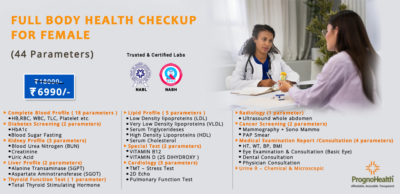Cancer: Types, Symptoms, Prevention and Treatment
Cancer is a group of diseases characterised by the uncontrolled growth and spread of abnormal cells. If the spread is not controlled, it can result in death. Cancer can develop in almost any part of the body and has various types and stages, each with unique features, causes, symptoms, and treatment options.
What is Cancer?
Cancer occurs when the body’s normal control mechanism stops working. Old cells do not die and instead grow out of control, forming new, abnormal cells. These extra cells may form a mass of tissue, called a tumor. Not all tumors are cancerous; benign tumors do not spread to other parts of the body.

Types of Cancer
Cancer can be broadly categorised based on the type of cell they originate from and the organ or tissue where they develop:
- Carcinomas:
- Arise from epithelial cells that line the inside and outside surfaces of the body.
- Common types include breast cancer, lung cancer, colon cancer, and prostate cancer.
- Sarcomas:
- Originate from connective tissues such as bone, cartilage, fat, muscle, or blood vessels.
- Examples include osteosarcoma (bone cancer) and liposarcoma (fat tissue cancer).
- Leukemias:
- Start in the blood-forming tissue of the bone marrow and result in large numbers of abnormal white blood cells.
- Examples are acute lymphoblastic leukemia (ALL) and chronic myeloid leukemia (CML).
- Lymphomas:
- Begin in the lymphatic system, the network of vessels and glands that help fight infection.
- Types include Hodgkin lymphoma and non-Hodgkin lymphoma.
- Myelomas:
- Originate in plasma cells, a type of white blood cell found in bone marrow.
- Multiple myeloma is the most common form.
- Central Nervous System Cancers:
- Develop in the brain and spinal cord.
- Examples include glioblastoma and astrocytoma.
Causes and Risk Factors
Cancer can be caused by a variety of factors, often acting together. These include:
- Genetic Factors:
- Inherited mutations in certain genes can increase the risk of certain cancers.
- Examples include BRCA1 and BRCA2 gene mutations associated with breast and ovarian cancers.
- Environmental Exposures:
- Exposure to carcinogens such as tobacco smoke, asbestos, and certain chemicals can cause cancer.
- Radiation exposure, both from medical treatments and environmental sources, can increase cancer risk.
- Lifestyle Factors:
- Diet, physical activity, and alcohol consumption can influence cancer risk.
- Obesity and a sedentary lifestyle are linked to an increased risk of various cancers.
- Infections:
- Certain viruses, bacteria, and parasites can increase the risk of cancer.
- Human papillomavirus (HPV) is linked to cervical cancer, and hepatitis B and C are associated with liver cancer.
- Immune System Function:
- Immunocompromised individuals, such as those with HIV/AIDS or those on immunosuppressive drugs, have a higher risk of certain cancers.
Symptoms of Cancer
Symptoms vary widely depending on the type and location of the cancer but may include:
- General Symptoms:
- Unexplained weight loss.
- Fatigue and weakness.
- Localised Symptoms:
- Persistent cough or hoarseness.
- Unexplained lumps or swelling.
- Changes in bowel or bladder habits.
- Other Symptoms:
- Skin changes such as new moles or changes in existing moles.
- Difficulty swallowing or persistent indigestion.
- Unusual bleeding or discharge.
Diagnosis of Cancer
Diagnosing cancer involves a series of steps to determine the presence, type, and extent of the disease:
- Medical History and Physical Examination:
- Evaluation of symptoms, personal and family medical history, and a thorough physical exam.
- Laboratory Tests:
- Blood and urine tests can detect abnormalities that may indicate cancer.
- Tumor markers are substances produced by cancer cells or by the body in response to cancer.
- Imaging Tests:
- Techniques such as X-rays, CT scans, MRI, and PET scans help visualise tumors and determine their location and size.
- Biopsy:
- Removal of a small sample of tissue for examination under a microscope.
- Confirms the presence of cancer cells and helps identify the type of cancer.
- Genetic Testing:
- Analysis of DNA to detect mutations associated with specific cancers.
- Helps in personalising treatment strategies.
Staging and Grading of Cancer
Staging determines the extent of cancer in the body and whether it has spread. The most common system used is the TNM system:
- T (Tumor): Size and extent of the main tumor.
- N (Nodes): Spread to nearby lymph nodes.
- M (Metastasis): Spread to other parts of the body.
Grading assesses how abnormal the cancer cells look under a microscope and how quickly they are likely to grow and spread. Grades range from low (slow-growing) to high (fast-growing).
Treatment of Cancer
Cancer treatment depends on the type, location, and stage of the disease and may include one or a combination of the following:
- Surgery:
- Removes the tumor and some surrounding healthy tissue.
- Often used for localised cancers.
- Radiation Therapy:
- Uses high-energy radiation to kill cancer cells or shrink tumors.
- Can be external or internal (brachytherapy).
- Chemotherapy:
- Uses drugs to kill rapidly dividing cancer cells.
- Can be systemic (throughout the body) or localised (targeting specific areas).
- Targeted Therapy:
- Uses drugs that specifically target cancer cells with minimal damage to normal cells.
- Includes drugs that block specific proteins or pathways involved in cancer growth.
- Immunotherapy:
- Stimulates the body’s immune system to fight cancer.
- Includes treatments like immune checkpoint inhibitors and CAR T-cell therapy.
- Hormone Therapy:
- Blocks or removes hormones that fuel certain cancers, such as breast and prostate cancer.
- Stem Cell Transplant:
- Replaces damaged bone marrow with healthy stem cells.
- Used in blood cancers like leukemia and lymphoma.
- Precision Medicine:
- Tailors treatment based on genetic, environmental, and lifestyle factors specific to the patient.
- Involves the use of targeted therapies and genetic testing.
Prevention of Cancer
While not all cancers can be prevented, certain measures can significantly reduce the risk:
- Avoid Tobacco:
- Smoking and exposure to secondhand smoke are major causes of cancer.
- Quitting smoking reduces the risk of lung and other cancers.
- Healthy Diet:
- Eating a diet rich in fruits, vegetables, and whole grains while limiting processed foods and red meat.
- Maintaining a healthy weight through balanced nutrition and regular exercise.
- Limit Alcohol:
- Reducing alcohol consumption can lower the risk of certain cancers.
- Protect from Sun Exposure:
- Using sunscreen, wearing protective clothing, and avoiding tanning beds can reduce the risk of skin cancer.
- Vaccination:
- Vaccines against certain infections, such as HPV and hepatitis B, can prevent associated cancers.
- Regular Screening:
- Routine screening tests, such as mammograms, colonoscopies, and Pap smears, can detect cancers early when they are most treatable.
- Safe Practices:
- Practicing safe sex and avoiding risky behaviours can reduce the risk of cancers linked to infections.

Living with Cancer
Coping with cancer involves addressing both physical and emotional challenges. Considerations include:
- Emotional Support:
- Counselling, support groups, and mental health services can help manage the emotional impact.
- Nutritional Support:
- Balanced nutrition is crucial for maintaining strength and managing treatment side effects.
- Physical Activity:
- Regular exercise can improve overall well-being and aid recovery.
- Palliative Care:
- Focuses on providing relief from symptoms and improving the quality of life for patients with serious illness.
- Follow-Up Care:
- Regular check-ups to monitor health, manage side effects, and detect any recurrence.
- Patient Education:
- Understanding the disease, treatment options, and self-care strategies empowers patients to make informed decisions.
Cancer is a complex and multifaceted disease that affects millions worldwide. Advances in medical research continue to improve our understanding, diagnosis, and treatment of cancer, offering hope for better outcomes and quality of life for those affected. Early detection, personalised treatment approaches, and lifestyle modifications are key components in the fight against cancer
Related Blogs
Blog Categories
Top rated products
-
 Full Body Health Checkup I
Rated 5.00 out of 5
Full Body Health Checkup I
Rated 5.00 out of 5₹3,000.00Original price was: ₹3,000.00.₹1,770.00Current price is: ₹1,770.00. -
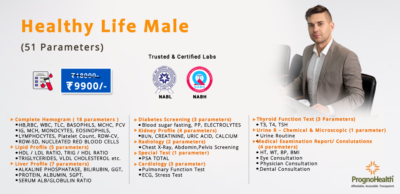 Healthy Life Male
Healthy Life Male
₹18,000.00Original price was: ₹18,000.00.₹9,900.00Current price is: ₹9,900.00. -
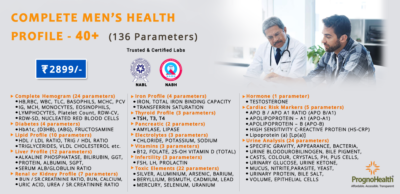 Complete Men’s Health Profile – 40+ – 136 Parameters
₹2,899.00
Complete Men’s Health Profile – 40+ – 136 Parameters
₹2,899.00
-
 OFFICE STAFF PACK II
OFFICE STAFF PACK II
₹2,400.00Original price was: ₹2,400.00.₹1,320.00Current price is: ₹1,320.00. -
 Full Body Health Checkup III
₹11,000.00
Full Body Health Checkup III
₹11,000.00
About Us
Progno Health is a Corporate Health & Wellness Specialist providing services to Pan India. We offer Pre-employment Health Checkup Packages, Annual Health Checkup Packages, Executive Health Checkup Packages, Occupational Health Checkup Packages, and other Health & Wellness Services.


